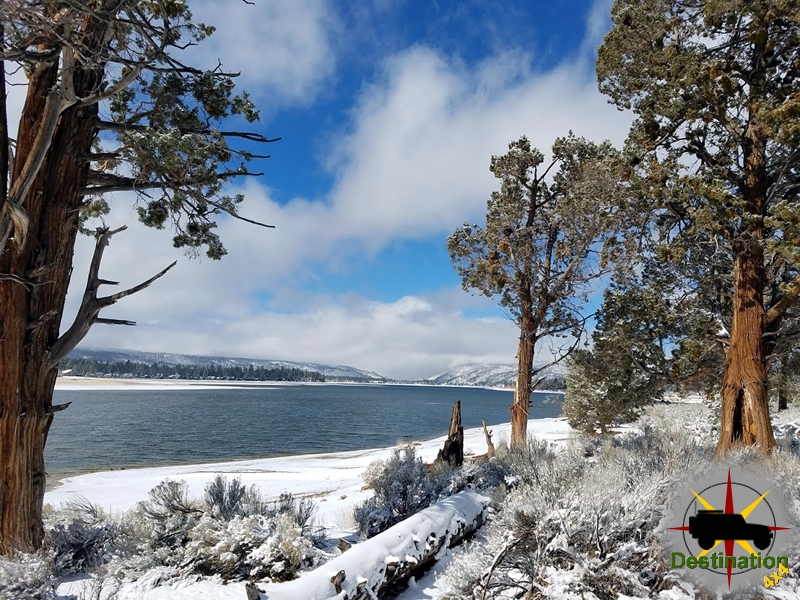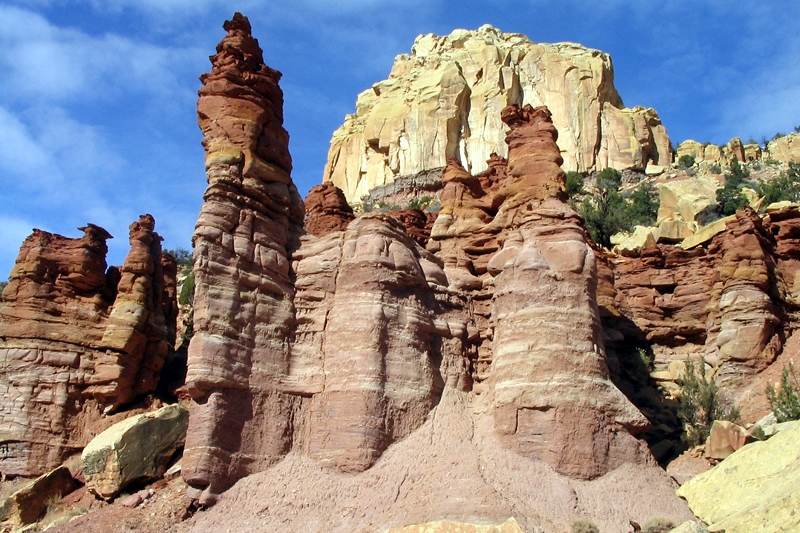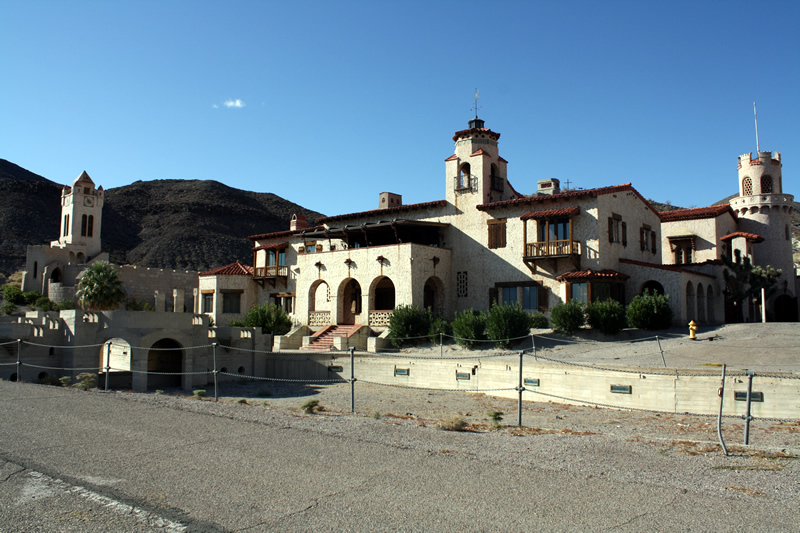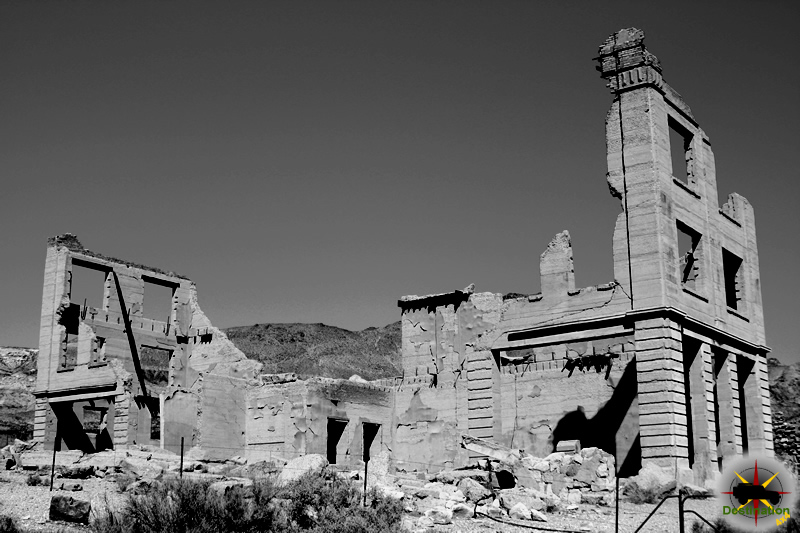
Methodist Church of Carson City – Nevada State Historic Marker

Carson City’s Methodist Church is a historic church located in the city of Carson City, Nevada and recognized with Nevada State Historic Marker number 71. The church was established in 1862 and has been an integral part of the community since then. Over the years, the church has undergone several renovations and additions to accommodate the growing congregation.
History
Carson City’s Methodist Church was established in 1862, shortly after the city was founded. The church was initially a small wooden structure that could accommodate only a handful of people. As the congregation grew, the church underwent several renovations and expansions. In 1906, a new church building was constructed, which included a sanctuary, classrooms, and an office.
The church played an important role in the community, providing a place for worship, social events, and community gatherings. During the Great Depression, the church provided assistance to the needy, including food and clothing. The church continued to be an important part of the community through the 20th century and into the present day.
Architecture
Carson City’s Methodist Church is a beautiful example of Gothic Revival architecture. The church’s exterior features pointed arches, steeply pitched roofs, and elaborate tracery. The church’s bell tower is a prominent feature of the building and can be seen from several blocks away.
The interior of the church is equally impressive, with stained glass windows, a vaulted ceiling, and wooden pews. The sanctuary is the focal point of the interior, with a beautiful altar and a pipe organ.
Community Involvement
Carson City’s Methodist Church has always been actively involved in the community. The church has provided assistance to the needy, supported local charities, and hosted community events. The church’s outreach programs have included a food pantry, a clothing drive, and a summer camp for children.
The church has also been involved in promoting social justice issues, including racial and gender equality, affordable housing, and healthcare access. The church’s advocacy work has included lobbying elected officials and organizing protests and demonstrations.
Carson City’s Methodist Church has been an integral part of the community for over 150 years. The church’s Gothic Revival architecture is a beautiful example of the style, and the church’s community involvement and advocacy work have made it an important institution in the city.
Nevada State Historic Marker Text
Dedicated in 1867, this church serves a congregation that dates to 1859. Like many other buildings in Carson City, the stone used in its construction was quarried at the nearby State Prison. Reverend Warren Nims (Pastor 1863-1866) was responsible for much of the original construction. Altered extensively over the years, the structure, with its octagonal porch posts and pointed-arch windows, is one of Nevada’s oldest religious structures.
STATE HISTORICAL MARKER NO. 71
STATE HISTORIC PRESERVATION OFFICE
NEVADA LANDMARK SOCIETY
Nevada State Historic Marker Summary
| Name | Methodist Church of Carson City |
| Location | Carson City, Nevada |
| Nevada State Historic Marker | 71 |
| Latitude, Longitude | 39.1645, -119.7693 |
Nevada State Historic Marker Location
Nevada State Historic Marker number 71 is in Carson City, Nevada on North Division Street. The church building is located on the Northwest corner at the intersection of North Division Street and West Musser Street. The Marker is mounted Methodist Church to the left of the entrance doors.
References
X-15 Flight 3-65-97 Crash, November 15, 1967
On November 15, 1967, the X-15 Flight 3-65-97 experienced a catastrophic failure during a test flight, resulting in the death of pilot Michael J. Adams.

Beginning in the 1940’s, one of the most important locations for flight testing in the United States is the Mojave Air and Space Port, located in the Mojave Desert in California. With its wide-open spaces, dry climate, and proximity to aerospace companies and research facilities, the Mojave has become a hub for experimental aircraft testing and research, playing a vital role in advancing the field of aviation. In this report, we will explore the history and significance of flight testing in the Mojave, and examine some of the groundbreaking aircraft and technologies that have been developed and tested in this unique location.
The X-15 was a rocket-powered experimental aircraft developed by the United States Air Force and NASA in the 1950s and 1960s and the pinnacle of speed testing in the 1960’s. On November 15, 1967, the X-15 experienced a catastrophic crash during a test flight, resulting in the death of pilot Michael J. Adams. The crash was a tragic event in the history of experimental aviation and highlighted the risks and challenges of pushing the boundaries of technological innovation.

The X-15 was designed to fly at extremely high speeds and altitudes, reaching speeds of up to Mach 6.7 (about 4,500 miles per hour) and altitudes of over 350,000 feet. It was powered by a rocket engine and was capable of carrying out a wide range of scientific and engineering experiments in the upper atmosphere and beyond.
On the day of the crash, Adams was piloting the X-15 on its 191st test flight. The flight was intended to test a new navigation system and to gather data on the effects of high-altitude flight on the human body. The X-15 was carried to an altitude of 45,000 feet by a B-52 bomber, and then released to continue its ascent on its own.
However, shortly after reaching an altitude of about 50 miles, the X-15 began to experience control problems. The aircraft began to roll and yaw uncontrollably, and Adams was unable to regain control. The X-15 eventually went into a spin and began to break apart, with Adams ejecting from the aircraft at an altitude of about 15,000 feet. Tragically, Adams was unable to survive the ejection and the subsequent impact with the ground.
The cause of the X-15 crash was later determined to be a malfunction in the aircraft’s control system. Specifically, one of the X-15’s two reaction control system thrusters had become stuck in the “on” position, causing the aircraft to go into an uncontrolled spin. Despite efforts to regain control, the X-15 was unable to recover from the spin and ultimately crashed.
The X-15 crash was a tragic event that highlighted both the risks and rewards of pushing the boundaries of technological innovation. While the loss of Michael J. Adams was a devastating blow to the aviation community, his legacy lives on in the many important scientific and engineering discoveries made possible by the X-15 program.
X-15 Flight 3-65-97
X-15 Flight 3-65-97 came to rest East of Mojave just North of Highway 58. The site contains a small memorial and one should remember that a brave man lost his life at this location.
References
YB-49 Crash Site, June 5, 1948
The YB-49 was a prototype jet-powered flying wing aircraft designed and built by Northrop Corporation in the 1940s and 1950s. On June 5, 1948, the YB-49 experienced a catastrophic crash near Mojave in Los Angeles County, California, which resulted in the death of all five crew members on board. Captain Glen Edwards was the co-pilot of the flight, and the namesake of Edwards Air Force Base. The crash was a significant event in aviation history, as it raised questions about the safety of experimental aircraft and the future of jet-powered flight.

The YB-49 was designed as a successor to the earlier Northrop XB-35 flying wing bomber, which had been developed during World War II. The YB-49 was a radical departure from traditional aircraft design, with no tail or fuselage and a single large wing that housed the crew, engines, and weapons. The aircraft was powered by eight General Electric J35 turbojet engines and was capable of speeds up to 500 miles per hour and altitudes up to 40,000 feet.
On the day of the crash, the YB-49 took off from Muroc Air Force Base in California for a test flight. The flight was routine until about an hour into the flight, when the aircraft suddenly went into an uncontrolled spin and crashed into the desert floor. The cause of the crash was later determined to be a malfunction in the aircraft’s flight control system, which caused the elevons (the wing-mounted control surfaces that control pitch and roll) to become stuck in a partially raised position. This caused the aircraft to become unstable and enter the spin.
Brave Men Lost
The crash of the YB-49 cost these men their lives:
- Major Daniel H. Forbes, Jr. – Pilot
- Captain Glen W. Edwards – Copilot
- Lt. Edward L. Swindell – Flight Engineer
- Clare C. Lesser – Air Force civilian engineers
- Charles H. LaFountain – Air Force civilian engineers
Muroc AFB was renamed Edwards AFB on December 5, 1949 in honor of the late Capt. Glen W Edwards
The crash of the YB-49 was a major setback for Northrop Corporation, which had invested significant time and resources into the development of the flying wing design. It also raised concerns about the safety of experimental aircraft and the need for more rigorous testing and evaluation of new designs before they are put into service. In the years following the crash, Northrop continued to develop and refine the flying wing design, eventually leading to the development of the B-2 stealth bomber, which entered service with the U.S. Air Force in the 1990s.

The crash of the YB-49 was a tragic event that highlighted the risks and challenges of experimental aircraft design. However, it also spurred innovation and development in the aviation industry, leading to the creation of new and advanced aircraft designs that continue to shape the field of aviation today.
YB-49 Crash Site Location summary
| Name | YB-49 Crash Site |
| Location | Mojave Desert, Los Angeles County, California |
| Latitude, Longitude | 35.04243, -117.9926 |
YB-49 Trail Map
The YB-49 came to rest East of Mojave just North of Highway 58. The site contains a small memorial and one should remember that this is the location of the deaths of five brave men.
References
Chollar Mine – Nevada State Historic Marker
The Chollar Mine is a historic gold mine and Nevada State Historic Marker Number 209, located in Virginia City, Nevada, United States. The mine was discovered in 1859 during the famous Comstock Lode, which was the first major silver deposit discovery in the United States. The Chollar Mine was primarily a gold mine, and is located on the eastern slope of Sun Mountain.

The Chollar Mine was one of the most productive mines during the Comstock Lode era, and it operated continuously until 1942. The mine was known for producing high-grade gold ore, which was extracted using traditional mining methods such as pick and shovel, as well as dynamite. The mine reached a depth of over 1,600 feet, and had extensive underground workings.
The mine is open for guided tours, which take visitors deep into the underground workings of the mine. Visitors can see the original equipment used to extract gold ore, such as air-powered drills and ore carts. The tour also provides information on the history of the Comstock Lode, the miners who worked at the Chollar Mine, and the mining techniques used during that era.
One of the highlights of the Chollar Mine tour is the view of the impressive “Glory Hole.” This was a large vertical shaft that was used to extract ore from the deep levels of the mine. Visitors can see the shaft and the surrounding structures that supported the mine.
The Chollar Mine is a fascinating piece of American mining history, offering visitors an opportunity to learn about the challenges and triumphs of the early miners who worked there. The mine tour is a must-see for anyone interested in mining history or the American West, and Virginia City provides a charming backdrop to this important piece of history.
Nevada State Historic Marker Text
Nevada State Historical Markers identify significant places of interest in Nevada’s history. The Nevada State Legislature started the program in 1967 to bring the state’s heritage to the public’s attention with on-site markers. Budget cuts the program became dormant in 2009.
First located in 1859, the Chollar was consolidated with the Potosi in 1865. As the Chollar-Potosi, it was one of the leading producers on the Comstock. The Nevada Mill was erected here in 1887 to process low-grade Chollar ore. It was the last to use the Washoe Pan Process, but the first on the Comstock to generate and utilize electric power.
State Historical Marker Number 209
Nevada State Historic Marker Summary
| Name | Chollar Mine |
| Location | Virginia City, Storey County, Nevada |
| Nevada State Historic Marker | 209 |
| Latitude, Longitude | 39.3016, -119.6502 |
Chollar Mine Location
The Nevada State Historic Marker number 209 is found in Virginia City, Storey County, Nevada. The Chllar Mine Marker is located at the intersection of F Street and Nevada Route 341 on F Street. Marker is at or near this postal address: 615 South F Street, Virginia City NV 89440, United States
References
Happy Bottom Riding Club

The Happy Bottom Riding Club was a legendary dude ranch and restaurant located in the Mojave Desert in California. The club was opened by aviator and screenwriter Pancho Barnes in the 1930s and quickly became a popular hangout for Hollywood celebrities, pilots, and other socialites.
The History of the Happy Bottom Riding Club
Pancho Barnes, born Florence Lowe Barnes in 1901, was a pioneering aviatrix who set numerous speed and altitude records in the early days of aviation. She was also a talented screenwriter who worked on several Hollywood films, including “Hell’s Angels,” directed by Howard Hughes.
In the 1930s, Barnes purchased a ranch in the Mohave and converted it into a private airfield. She named it the Happy Bottom Riding Club, after the nickname she earned as a pilot for her daring landings in dry lakebeds. The airfield quickly became a popular destination for pilots and aviation enthusiasts, who would fly in for weekend parties and barnstorming exhibitions.
Barnes also built a large clubhouse on the property, which she turned into a nightclub. The club was decorated with aviation memorabilia and had a western-themed bar and dance floor. Barnes hosted lavish parties at the club, inviting Hollywood celebrities, politicians, and other high-profile guests.
The Happy Bottom Riding Club was famous for its rowdy, freewheeling atmosphere. Barnes was known for her colorful personality and love of partying, and she encouraged her guests to let loose and have fun. The club was also known for its raunchy sense of humor and off-color jokes.
Despite its reputation as a wild party spot, the Happy Bottom Riding Club was also a place of innovation and progress. Barnes used the club as a base for her aviation business, which included flight instruction, aircraft maintenance, and aerial photography. She also provided a space for women pilots to gather and share their experiences in a male-dominated industry.
Decline of the Happy Bottom Riding Club
In the 1950s, the government took over her airfield and turned it into a military base. Barnes was forced to sell her property and move her business elsewhere. The club was a favorite haunt of many test pilots and future astronauts, perhaps the most famous was Chuck Yaeger who became the first man to break the sound barrier.
The Happy Bottom Riding Club continued to operate under new ownership for a few more years, but it was never the same without Barnes’ larger-than-life personality at the helm. The club eventually closed its doors in the 1950s and the building was demolished.
Despite its relatively short lifespan, the Happy Bottom Riding Club remains a legendary spot in aviation and Hollywood history. The ranch is destroyed by fire on November 13, 1953. Today, the ranch is located on land controlled by Edwards Air Force base.
Legacy of the Happy Bottom Riding Club
Today, the Happy Bottom Riding Club lives on in popular culture as a symbol of a bygone era of glamour, adventure, and fun. It has been referenced in movies, TV shows, and music, and continues to inspire people around the world to pursue their dreams and live life with gusto.
In 1988, a group of aviation enthusiasts founded the Pancho Barnes Trust Estate, which works to preserve Barnes’ legacy and promote aviation education. The organization has hosted several events and fundraisers over the years, including a biennial fly-in at the Mojave Air and Space Port.
In 2009, a feature film about Barnes’ life and career, titled “The Legend of Pancho Barnes and the Happy Bottom Riding Club,” was released. The film, directed by Amanda Pope, received critical acclaim and helped introduce Barnes’ story to a new generation.



